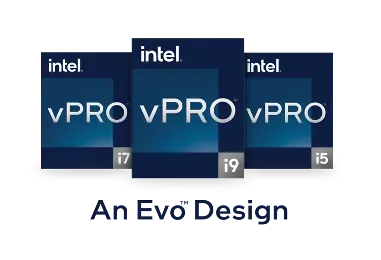Smarter sustainability solutions for tribal IT leaders
A tradition of leading by example
Environmental sustainability is a way of life for tribal communities. That tradition is extending into how tribal organizations seek to manage their operations and businesses. It helps enhance their reputation within the community and with their employees.
By prioritizing sustainability in their technology solution decisions as well, tribal organizations demonstrate their commitment to the environment and reflect the interests of the community and employees.
This article reviews these challenges and discusses how, with smarter sustainability solutions, tribal IT leaders can contribute to a more sustainable future.
A demand for environmental accountability
Sustainability has been a part of Native American culture for centuries, long before it became a mainstream environmental practice. Today, many tribes continue to practice sustainable living, adapting practices to address modern environmental challenges.
The Navajo Nation, for example, has implemented a number of sustainability initiatives, including a solar energy program that reduces reliance on fossil fuels and a water conservation program featuring rainwater harvesting and water reuse.1
Tribal IT leaders face many of the same challenges as other IT organizations when seeking smarter ways to modernize and reduce their carbon footprint.
- Infrastructure energy demands continue to increase. As data has become more valuable to organizations, infrastructure demands — including energy demands — have grown.
- Circular economy practices limit environmental impact. People are increasingly aware of how technology, from mobile phones to data centers, impacts the environment. Tribal organizations must demonstrate that they limit their environmental impact by engaging in circular practices such as reusing, refurbishing, and recycling end-of-life devices.
- The next-generation workforce prefers sustainable workplaces. Native Americans are more likely than the overall population to seek work in the public sector.2 Yet, to attract workers moving forward, tribal organizations must display sustainable practices, because more than half of Gen Z and Millennial workers research an employer’s environmental impact and policies before accepting a job from it.3
Smarter choices in technology can be the key to meeting these challenges and creating long-term opportunities.
Reduce environmental impact with more sustainable technology
A tribal organization can reduce its own environmental impact by implementing advanced, more sustainable technology in its own operations — without sacrificing performance or increasing costs.
- Data centers can significantly reduce their carbon footprint. One way to do so is with Lenovo Neptune™ liquid cooling technology, which delivers 98% heat removal efficiency and up to 40% lower power consumption.4
- The latest technology is engineered with sustainability top of mind. Lenovo, for instance, offers nearly 300 products containing post-consumer recycled content, and has eliminated 10,000 tons of CO2 emissions since 2017 via low-temperature soldering.4
- Smarter technology runs more efficiently. The ThinkPad® X1 Carbon, powered by the Intel vPro® platform, an Intel® Evo™ Design that, with the 13th Gen Intel® Core™ i7 processor, is designed to conserve and optimize power.
- Packaging can be a friend to the environment. A box is not just a box. Forward-thinking manufacturers like Lenovo make select packaging from renewable materials like bamboo and sugarcane.
- Sourcing matters, too. Devices made in North America — such as those from Lenovo’s Monterrey, Mexico plant — reduce fossil fuel consumption from shipping compared to offshore sources.
Technology partner services enable greater sustainability
While a tribal organization’s technology can help improve its track record for sustainability, it can also reduce its environmental impact by leveraging services provided by its technology partner. Managed services from a trusted partner can help tribal governments reduce operational workloads, keeping devices on the job longer and reducing the need to purchase newer ones.
Lenovo TruScale Everything as a Service is a fully managed subscription-based model that gives tribal organizations a budget-friendly option — like the Lenovo ThinkPad® T14 powered by Intel vPro®, An Intel® Evo™ Design, which prioritizes power efficiency without sacrificing performance — to improve the technology and services employees need today. Optimizing a data center with Lenovo TruScale has demonstrated the ability to reduce CO2 emissions and power consumption by up to 20%.5
Tribal leaders can further embrace circular economy processes via Lenovo Asset Recovery Services — a reusing, refurbishing, and recycling solution that helps decrease waste and keep resources circulating. In 2022, 71% of the devices collected through Asset Recovery Services were refurbished or reused for parts.4
A trusted technology partner for tribal leadership
The right technology and the right technology partner can help make a tribal organization a sustainability leader for its community.
Hundreds of tribal nation businesses and organizations trust Lenovo to deliver secure, high-performance solutions and expertise for the unique challenges facing their IT professionals.
And Lenovo offers far more than the latest technology. Our service is unparalleled, including essential help desk support for remote workers.
Lenovo is itself a leader in sustainable technology practices and innovation. The company used 13.5 million kg of recycled plastic in 2021 alone, for instance, and has committed to achieving net-zero greenhouse gas emissions by 2050.
To make your organization a sustainability leader, learn more about Lenovo for Tribal Organizations or contact your Lenovo for Tribal Organizations representative.





